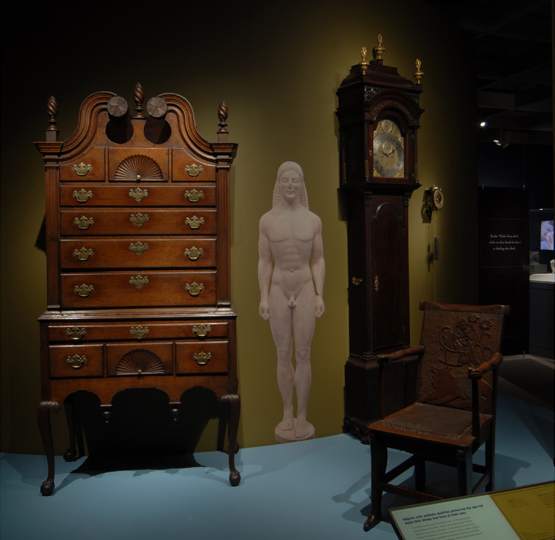Objects with animate qualities preserved the age-old myth that things had lives of their own.
Furniture was life-like in multiple ways. It often possessed the attributes of bodies—both human and animal. Chests had feet, knees, legs, and waists. Clocks had faces, and chairs had arms and backs. Clocks also came to life in a more explicit way: their faces concealed a movement that functioned like a brain and powered a pendulum whose regular beat echoed that of a human heart.
High Chest, 1775-95
Colchester, Connecticut
Cherry and white pine
Chipstone Foundation 1997.5
Tall Case Clock, c.1770
Works by William Addis
Carving attributed to Nicholas Bernard
and Martin Jugiez
Philadelphia, Pennsylvania
Mahogany with brass works
Chipstone Foundation 1996.2
Armchair, late-nineteenth century
Mississippi or Louisiana
Cedrela
Lent by Frank Martin
